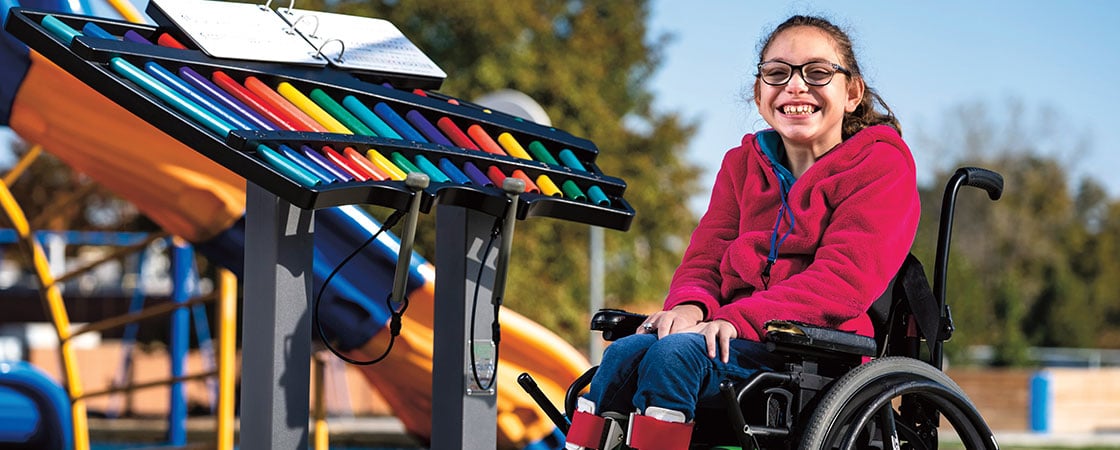Melody was born with cerebral palsy (CP), a condition that affects movement, balance, and posture. CP happens when the brain can’t properly send messages to muscles.
People with CP can experience a variety of symptoms. In Melody’s case, she is unable to walk on her own. She has trouble getting in and out of her wheelchair, and it’s hard for her to lift things with her right hand.
Because she uses a wheelchair, Melody often found herself sitting alone at recess. Her friends would chat with her for a bit but then run off to the swings or monkey bars. Melody could not join them because the playground wasn’t accessible to her; she couldn’t use any of the equipment. In fact, she couldn’t even enter the playground, because it was surrounded by a low concrete barrier and filled with gravel that she could not navigate in her wheelchair.
One day when she was in fourth grade, Melody once again watched her friends go off and play.
“I thought to myself, Why am I just sitting here?” she remembers.
That’s when Melody had an idea. She would help her school build an inclusive playground, where no one would be made to feel like an outsider.

